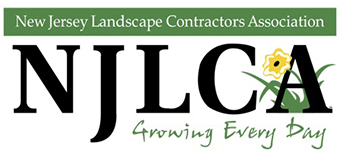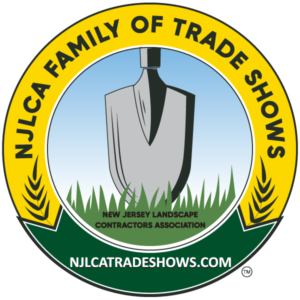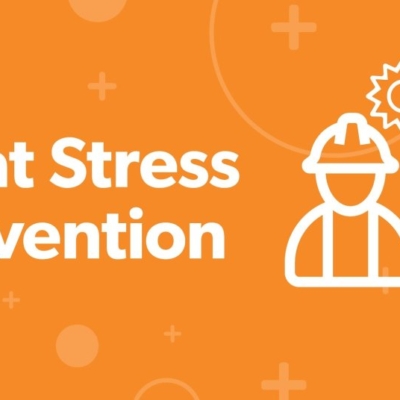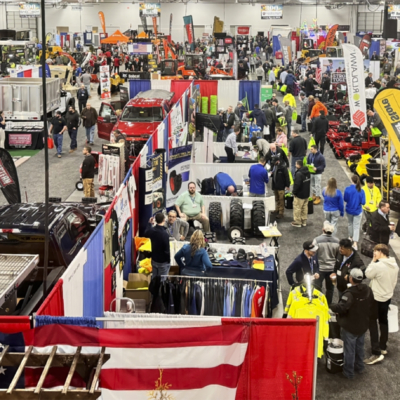Beech Leaf Disease Updates
by Joel Flagler, Rutgers Co-operative Extension of Bergen County, Professor and Agricultural Extension Agent
NJLCA’s good friend, Joel Flager, prepared the following update on Beech Leaf Disease. It is so widespread and seems to be quite deadly, according to the specialists at Rutgers. Now is the time for spraying high-value trees—with Broadform (fungicide that acts as a nematicide) as well as applying the high Potassium fertilizer to give trees extra resilience. It seems only specimen trees should receive the treatments as forested settings are ‘beyond hope’; since every individual beech tree must be treated and this is not possible in forested settings. Also, spray applications cannot be made near bodies of water.
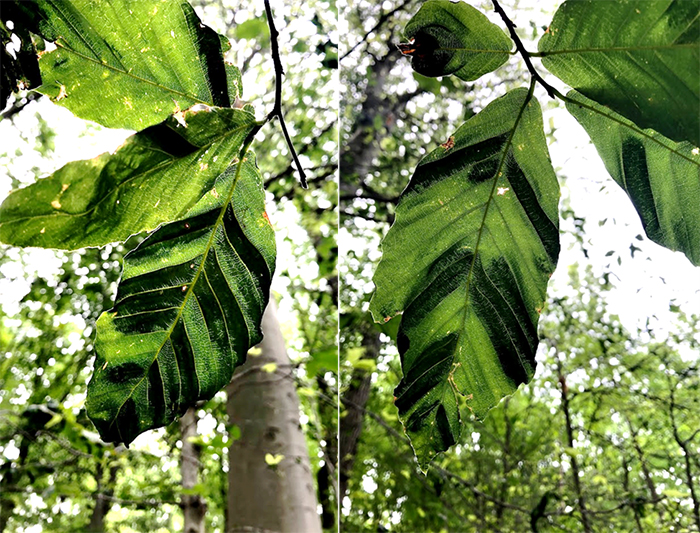
Symptomatic beech leaves afflicted with beech leaf disease. These photos are taken against the light sky to show the opaque banding of diseased leaf tissue, an indicative symptom of BLD. Photo Credit: Jean Epiphan, Rutgers Cooperative Extension.
Population Dynamics:
Nematode overwinters in infected buds. Early spring – eggs are laid in infested tissues and moved within leaves as they expand. Mid-summer -juveniles populate leaf tissue and adults build in numbers in leaf mesophyll. In fall adults exit leaf tissue and migrate to next year’s leaf buds.
Damage:
Leaves are malformed, thickened, shriveled and shed. Defoliation occurs from lower canopy and moves upward. Nematode infests only tissue in leaf and bud; never found in roots or woody limbs. In time leaf buds are smaller, stunted or aborted. Crowns thin as branches die back; rapid decline can take 1-2 yrs on small trees and 5-10 yrs for larger mature trees. Decreased photosynthesis due to leaf infection makes it hard for trees to stay nourished and they actually starve.
Outlook:
- It is expected that BLD will spread throughout the full range of Beech in the U.S. and Canada.
- Vectors that move/transport BLD nematodes: tussock moth caterpillar (spread them via excrement), beech blight aphid, birds that eat beech buds (on plumage). Plus: wind,humidity and precipitation. Rain flushes high numbers down to lower tree canopy levels. They are found to spread 38 ft from infected trees
- Expect major decline of Beech trees in wooded areas. There is no practical, cost-effective, legal treatment for forested areas. It is anticipated that most infected trees will die over the next 5-10 years. It is not effective to spray just some trees and leave nearby trees untreated. Treatment must be on all individual trees in an area. Thus, focus efforts to save specimen and high-value landscape trees. Treat these now (June 2024) or soon using phosphite fertilizer and spraying canopy with Broadform; or inject trees with Arbotect.
- Beech leaves are high in lignin and do not decompose quickly—thus providing habitat for wildlife (forest health) and preventing erosion and drought damage for long periods of time; while inhibiting weeds and invasive plant into the area. If they are lost the ecological impacts are significant. We could anticipate more erosion, drought damage, invasive plants as beeches are lost.
- Mitigation efforts are highly recommended as we anticipate great decline in beech forests. Water trees during drought; leave the leaf litter under trees, remove invasive plants that compete, never mow under beech, never over mulch. Underplant with the following species that will provide many of the same ecological benefits as beeches: Black Gum, Hickories, Chestnut Oak, White Oak, American Holly, White Pine
Pesticides: and cultural practices to combat BLD are early in the research phase. Treatments are still considered experimental. Promise is seen with the following: 1) polyphosphite fertilizer seems to stimulate trees’ natural defense response. Univ R.I. reccs 2 fl oz PolyPhosphite-30 + 14 oz water/1” DBH (see detailed fact sheet). Remove leaf litter first, apply to drip line, replace leaf litter. Two applications eg May and July. Phosphite fertilizer does not require pesticide license (fungicides do).
2) Fluopyram fungicide acts as a nematicide and reduces numbers in buds and leaves and improves canopy density. Cannot be applied near or over water. Broadform contains fluopyram. Need high-pressure sprayers for good coverage. Best candidates are beech with minimal die back, beech specimens shorter than 3o ft. Site conditions matter.
Start in Late July & repeat at 21 day intervals for total of4 applications. Rotate in Reliant to avoid pesticide resistance.
3) Arbotect 20-S (Thiabendazole)trials show improvement in beech with reduced dieback and lower numbers of nematodes in buds (Also used for Dutch Elm and Sycamore anthracnose). This fungicide is seen to be a nematicide. It is injected directly into the vascular system of the tree –low on the root flare (important to hit this site). Data is on August treatments but earlier is recommended. For beech trees > 10 inches DBH and < 50% dieback or defoliation.
More information from Rutgers can also be found here.
